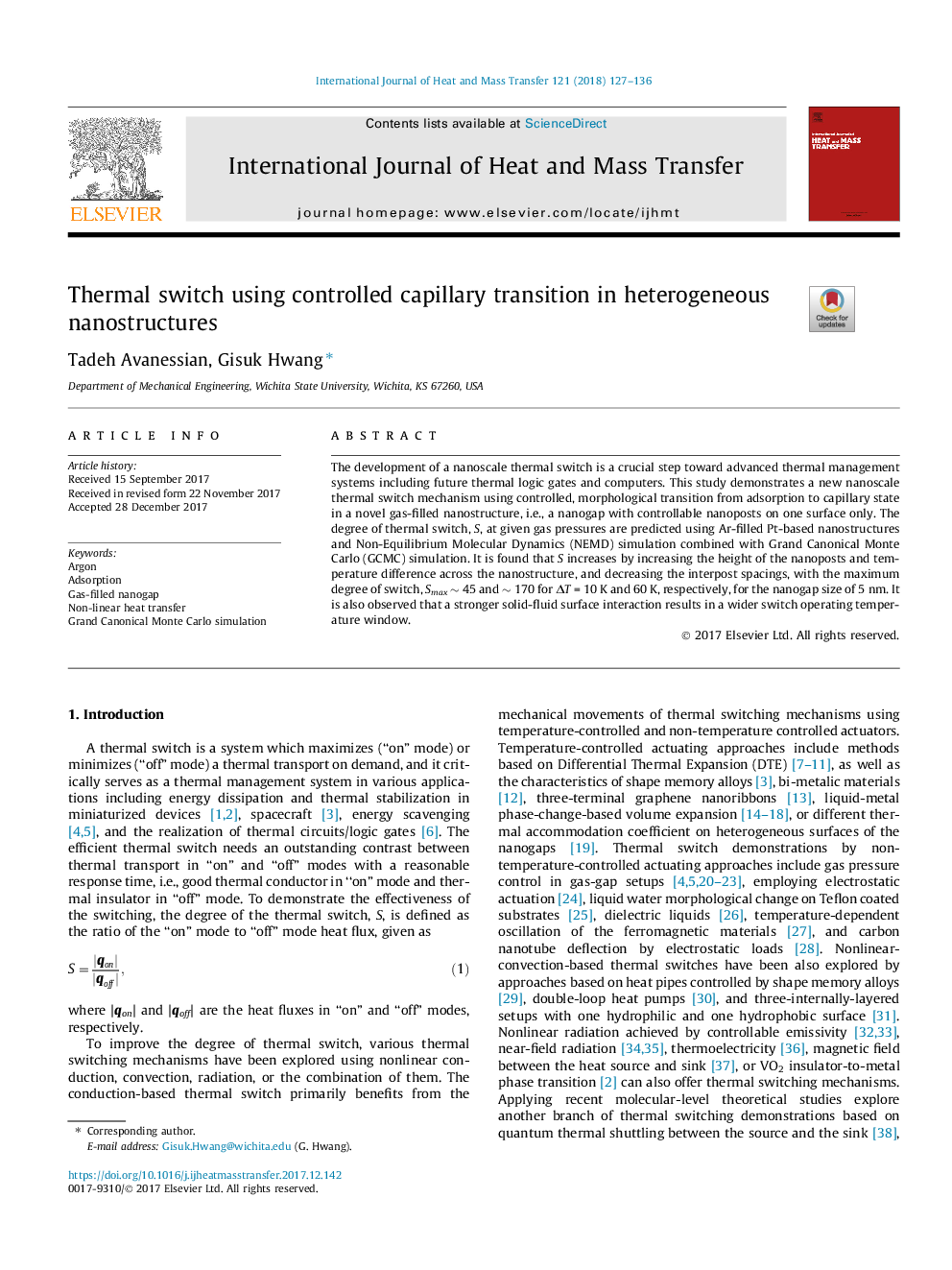| Article ID | Journal | Published Year | Pages | File Type |
|---|---|---|---|---|
| 7054436 | International Journal of Heat and Mass Transfer | 2018 | 10 Pages |
Abstract
The development of a nanoscale thermal switch is a crucial step toward advanced thermal management systems including future thermal logic gates and computers. This study demonstrates a new nanoscale thermal switch mechanism using controlled, morphological transition from adsorption to capillary state in a novel gas-filled nanostructure, i.e., a nanogap with controllable nanoposts on one surface only. The degree of thermal switch, S, at given gas pressures are predicted using Ar-filled Pt-based nanostructures and Non-Equilibrium Molecular Dynamics (NEMD) simulation combined with Grand Canonical Monte Carlo (GCMC) simulation. It is found that S increases by increasing the height of the nanoposts and temperature difference across the nanostructure, and decreasing the interpost spacings, with the maximum degree of switch, Smaxâ¯â¼â¯45 andâ¯â¼â¯170 for ÎTâ¯=â¯10â¯K and 60â¯K, respectively, for the nanogap size of 5â¯nm. It is also observed that a stronger solid-fluid surface interaction results in a wider switch operating temperature window.
Related Topics
Physical Sciences and Engineering
Chemical Engineering
Fluid Flow and Transfer Processes
Authors
Tadeh Avanessian, Gisuk Hwang,
